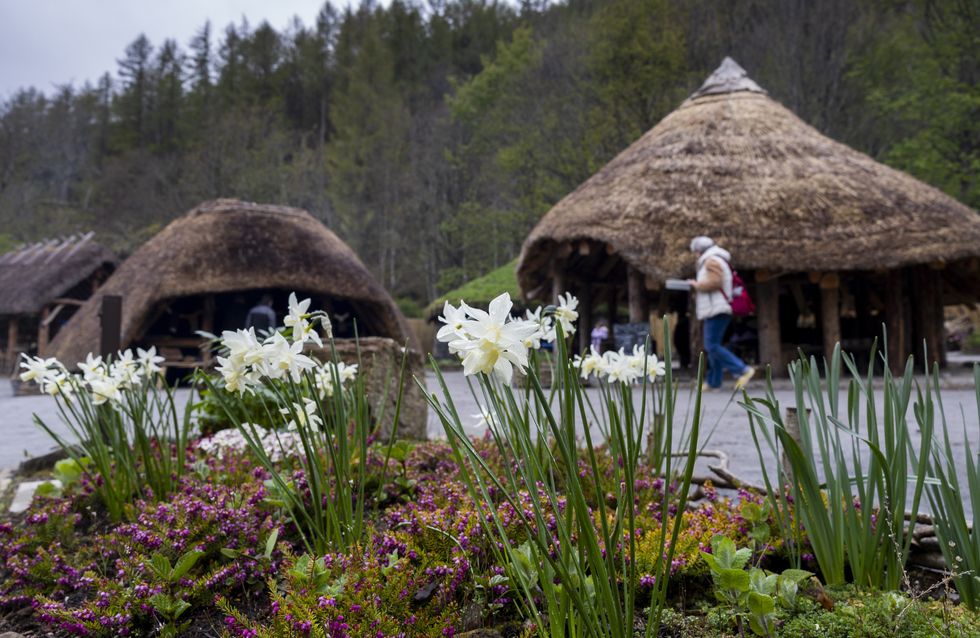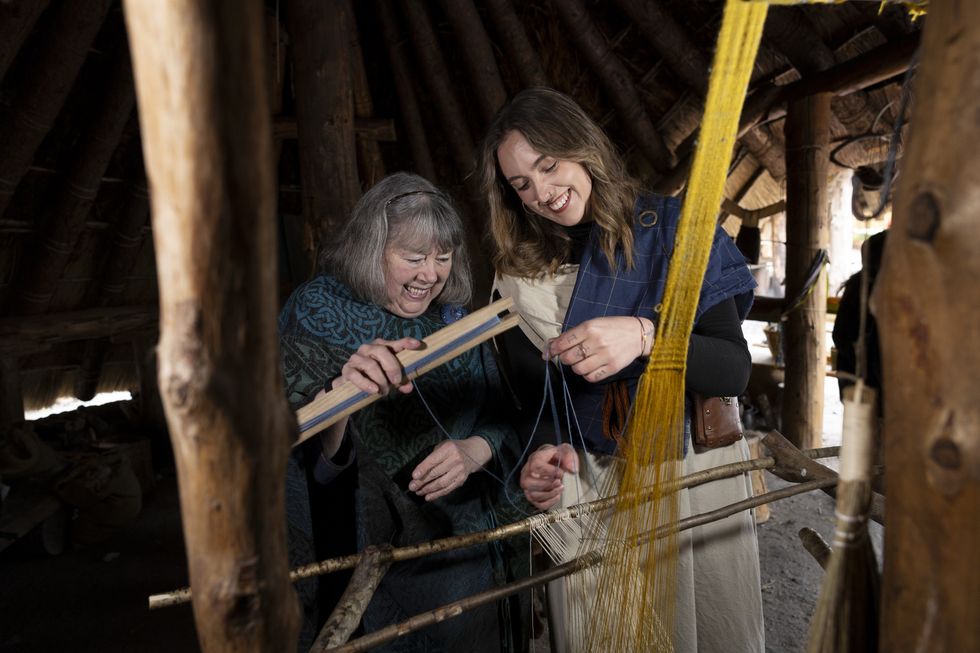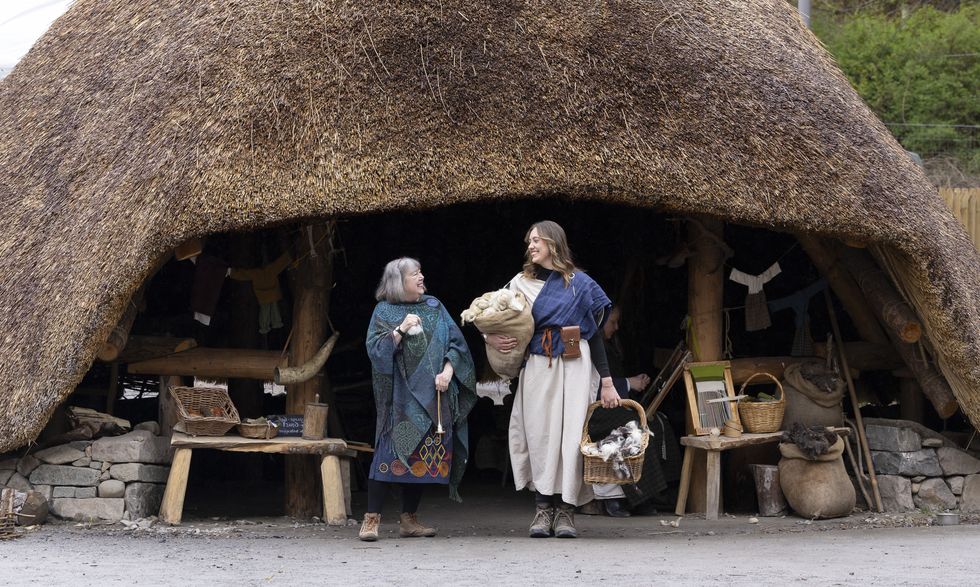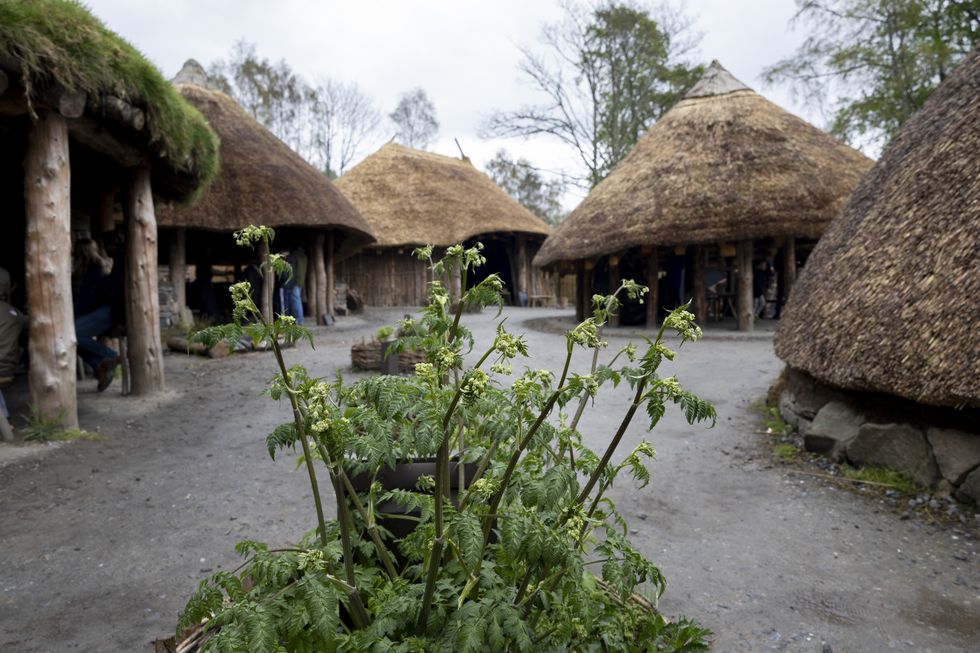Unique fabric has undergone analysis and conservation and is now on display to the public
Additional Reporting by Saskia Edwards
Don't Miss
Most Read
Latest
A rare piece of Iron Age textile that has been buried in a loch for nearly 2,500 years is now on public display for the first time.
The woven fabric, believed to be one of the oldest of its kind in Britain, was found in Loch Tay in Perthshire, where it was naturally preserved by the silt on the loch bottom.
The ancient textile is being showcased at the Scottish Crannog Centre's Iron Age village, visitor centre and museum.
The textile was discovered in 1979 during an excavation of an Iron Age loch dwelling house, known as the Oakbank Crannog.

The textile is now on display for the first time at the Scottish Crannog Centre's Iron Age village
The Scottish Crannog Centre

Archaeologists Maureen Kerr (left) and Isobelle Hanby used a warp-weighted loom to recreate the Oakbank Textile
The Scottish Crannog Centre
It was previously thought to be too fragile to go on show to the public.
The fabric has now undergone a painstaking stabilisation and conservation process, funded by Museums Galleries Scotland.
It has been on display since Wednesday, housed safely in a climate-controlled cabinet.
Mike Benson, director of the Scottish Crannog Centre, said: "We are absolutely thrilled to be able to invite the public to come and see this amazing find."
"This piece would have been made by a whole community, from the shearing of the sheep, to the processing and dyeing of the wool, to the weaving of the textile."
MORE ARCHAEOLOGY BREAKTHROUGHS:

The textile was preserved naturally on the bed of Loch Tay and has now been analysed by the University of Glasgow
The Scottish Crannog Centre

The fabric has been radiocarbon dated to between 480 and 390BC
The Scottish Crannog Centre
"Our centre today is very much about community and the one thing that unites all of us is our common humanity through the ages."
"We're really looking forward to finding out what people make of this rare textile, which is part of our past but also a hugely important part of our present and future," Benson added.
"We hope people will be drawn to see this exhibit, and the rest of our extensive collection, for years to come."
The fabric, known as the Oakbank Textile, has been analysed by archaeologists at the University of Glasgow.
They have radiocarbon dated the material to between 480 and 390 BC.
Dr Susanna Harris, senior lecturer in archaeology at the university, said: "There are very few early textiles of this date and we think this is the first one of this type, of 2/1 twill, in Scotland."

The centre hopes that the fabric will attract visitors to see its wider collection for years to come
The Scottish Crannog Centre
"Wool was such an important material in Scotland, it's been exciting to analyse this piece."
"It's great that the Scottish Crannog Centre has taken this step. It's really important finds like this go on display. It may be a small piece of textile but it tells us a lot about the heritage of Scottish textiles."
Crannogs were dwelling houses built on stilts or stone over water, usually with a bridge connecting them to the shore.
The first crannogs in Scotland were built on lochs from Neolithic times.
Very few are said to exist outside of Scotland and Ireland.
The centre's reconstructed crannog was destroyed in a fire in 2021.
Last year, the Scottish Crannog Centre reopened to visitors on a new and enlarged site near Kenmore.
The team are well on the way to completing a new crannog using sustainable and historical construction methods.














